Inside the Playbook: Michigan's Down G Run Play
Against Notre Dame, when attempting to attack the edge, Michigan attempted to utilize their traditional pin and pull run scheme. In this scheme, they are traditionally trying to "reach" with the TE to set the edge and pull around and up from there. But against Western Michigan, they adjusted their attack by running a "Down" scheme, rather than attempting to reach at the point of attack. This can be a different play call altogether, or it can be a scouted aspect of the offense and a line call. Either way, let's take a look at how it works.
Pin and Pull, Lead G and Outside/Wide Zone
Many teams that want to attack the edge do so with a "Wide Zone" or outside zone type scheme to get the edge on the defense.
But many teams find it a bit difficult to truly get the edge with a straight zone scheme. A nice adjustment is to pin and pull, which retains traditional zone blocking on the backside, but pins the defense down on the front side and pulls around to seal the defense inside. But where this is difficult is with the defender assigned with setting the edge. These players often need to be reached by a TE or lead back in order to allow the play to get outside. If this doesn't get accomplished, it can be difficult for the pullers in a pin and pull scheme to get around and upfield, and a play can be blown up.
Lead G will look similar to pin and pull, with down blocks up front, and the G pulling around the formation and up into the second level. It's effectively pin and pull with only the FSG pulling.
Here's an example of just that. Michigan's TE has to deal with a DE/OLB aligned outside of him. When he can't get his head to the outside of the play, he has to give up on his reach block and try to wash him down. However, that matchup will typically favor the defender, and the TE can't widen the hole or control him inside. That forces the pulling OL up inside the TE, however, the run lane is not widened by the TE, and the defense can collapse this hole, which forces the RB to bounce into the second level LB the pulling OL is trying to lead into.
A way of adjusting for this is to make a "Down" call or run a "Down" play.
"Down Scheme"
A down scheme can be run with either a tackle or a guard. Traditionally, however, it utilizes the play side guard (PSG) to down block the edge defender and wash him out of the play. "Down G", as it is known, gets an interior run blocker on an edge defender, which helps widen the run lane. The TE and the play side OT (PST) will then down block, helping to seal the defense inside. These down blocks similarly widen the gap for the RB to run through.
On the backside of the play, typically you will see the offense running it's stretch zone scheme. This acts to cut off the remaining defenders and seal them inside the box to give the RB a clear alley to run through.
However, like pin and pull, teams run it differently. Some will pin and pull back to the center, some to the back side guard (BSG), and some the whole line. So there is a variant that allows you to pin down with the center and pull around with the BSG. In this way, the play will look a lot like Power O, with the FSG acting as the kick block and the wrapping Guard pulling through the run lane. However, it is a bit different for the RB, as nominally it will be very difficult to read A-to-B-to-C gap. This play will almost always spring in the C-gap.
Examples
Michigan lines up in a shotgun with a flat back aligned to the far side of the field. In many cases, this is stretch or pin and pull into the boundary for the defense. Because of that tendency, WMU is going to send an additional player off the edge. But because it's "Down G", Michigan gets a 2-for-1 on its kick block.
The center and BSG have a miscommunication on this play. The NT is shaded weak, and the center expects the BSG to take over the block, but the BSG works to the 2nd level. Luckily for Michigan, the "Flipper" technique from the center is enough to slow the NT and the NT isn't able to redirect quickly enough for a TFL.
Like a smart offense, Michigan is blocking safeties instead of CBs. And one thing you see here is the WR unable to make the block on the safety because he charges hard at the snap. While you'd like the WR to work to him a little quicker off the LOS, it still goes to show why you block safeties instead of CBs. The CB, expecting crack exchange, works back outside when the WR goes inside after the safety and takes himself out of the play. Make CBs prove they understand run fits.
And it even works on the Goal Line. What happens if the EMOL never shows? You pull up and around and look for work. Here, the OG sees a scraping LB just in time to give enough of a push to allow the RB to bounce and get into the end zone.
With Split Flow
Michigan also added a wrinkle later in the year from a split back set, where the FB now added some split flow aspects, cutting off the backside DT and allowing the OL to work immediately to the second level.
Written in Chalk
Based on this, I did a Twitter thread for "Written in Chalk"
Etc.
As noted, some teams will also run "Down T" and kick with the OT instead of the PSG. Here's the Eagles running the "G scheme" but pulling the T. When the T doesn't find work, he wraps around. They also pin and pull to get the Center involved playside as well.
18 Stripes did a similar post on the subject
Pin and Pull, Lead G and Outside/Wide Zone
Many teams that want to attack the edge do so with a "Wide Zone" or outside zone type scheme to get the edge on the defense.
But many teams find it a bit difficult to truly get the edge with a straight zone scheme. A nice adjustment is to pin and pull, which retains traditional zone blocking on the backside, but pins the defense down on the front side and pulls around to seal the defense inside. But where this is difficult is with the defender assigned with setting the edge. These players often need to be reached by a TE or lead back in order to allow the play to get outside. If this doesn't get accomplished, it can be difficult for the pullers in a pin and pull scheme to get around and upfield, and a play can be blown up.
Lead G will look similar to pin and pull, with down blocks up front, and the G pulling around the formation and up into the second level. It's effectively pin and pull with only the FSG pulling.
Here's an example of just that. Michigan's TE has to deal with a DE/OLB aligned outside of him. When he can't get his head to the outside of the play, he has to give up on his reach block and try to wash him down. However, that matchup will typically favor the defender, and the TE can't widen the hole or control him inside. That forces the pulling OL up inside the TE, however, the run lane is not widened by the TE, and the defense can collapse this hole, which forces the RB to bounce into the second level LB the pulling OL is trying to lead into.
A way of adjusting for this is to make a "Down" call or run a "Down" play.
"Down Scheme"
A down scheme can be run with either a tackle or a guard. Traditionally, however, it utilizes the play side guard (PSG) to down block the edge defender and wash him out of the play. "Down G", as it is known, gets an interior run blocker on an edge defender, which helps widen the run lane. The TE and the play side OT (PST) will then down block, helping to seal the defense inside. These down blocks similarly widen the gap for the RB to run through.
On the backside of the play, typically you will see the offense running it's stretch zone scheme. This acts to cut off the remaining defenders and seal them inside the box to give the RB a clear alley to run through.
However, like pin and pull, teams run it differently. Some will pin and pull back to the center, some to the back side guard (BSG), and some the whole line. So there is a variant that allows you to pin down with the center and pull around with the BSG. In this way, the play will look a lot like Power O, with the FSG acting as the kick block and the wrapping Guard pulling through the run lane. However, it is a bit different for the RB, as nominally it will be very difficult to read A-to-B-to-C gap. This play will almost always spring in the C-gap.
Examples
Michigan lines up in a shotgun with a flat back aligned to the far side of the field. In many cases, this is stretch or pin and pull into the boundary for the defense. Because of that tendency, WMU is going to send an additional player off the edge. But because it's "Down G", Michigan gets a 2-for-1 on its kick block.
The center and BSG have a miscommunication on this play. The NT is shaded weak, and the center expects the BSG to take over the block, but the BSG works to the 2nd level. Luckily for Michigan, the "Flipper" technique from the center is enough to slow the NT and the NT isn't able to redirect quickly enough for a TFL.
The next example is blocked up front a little better, but WMU isn't biting so hard on pin and pull this time. This time, instead, the third level defender is attacking from depth at the snap to make his run fit. But the OG can really kick out the defensive EMOL and the down blocks do well to seal the defense inside. Coming down full speed on a fill in a run hole this size can be a difficult task for a safety, and the RB can make him miss, and then is off to the races.
Using a Lead Blocker
This is also a good short yardage and goal line scheme, particularly with a lead blocker. As seen above, the best way to cut down this play is to get a third level player into the hole. But by sending a lead blocker from the FB into that hole, you can drive that guy out of the hole and spring a big one.
Examples with Pin and Pull on Backside
The Chiefs (+Eagles and others as well) use this blocking adjustment vs a 9tech on the frontside of G and outside zone. Allows for a huge seam for the back to hit frontside. Also pull BSG to time up w/LB. 🔊 up to hear the why. pic.twitter.com/7niye2i96i— Geoff Schwartz (@geoffschwartz) October 3, 2018
Examples with Lead Blocker
Here, the FB does well to lead up into the hole with force and physicality. When the safety goes to fill, the FB gets leverage and unloads on him, crushing him back into the CB (who you don't block because he's outside and is either cut off by the kickout or by this lead block).
A tighter look to see that lead block. Would like to see the RT do a little better on his pin down. Gets a good initial punch to drive back the DL, but loses balances the DL is able to roll back into the play. He doesn't make a tackle, but that's something to be cleaned up going forward. Backside does well to seal the backside of the play, and the TE does a great job working to the MIKE and getting a key block on the scraping LB.
With Split Flow
Michigan also added a wrinkle later in the year from a split back set, where the FB now added some split flow aspects, cutting off the backside DT and allowing the OL to work immediately to the second level.
Michigan ran the “Down” play from the Wing-T Belly Series last week vs. Nebraska— Coach Dan Casey (@CoachDanCasey) September 27, 2018
▪️TE Climbs to LB
▪️LT Blocks down on 4i
▪️LG Kicks out 9 Tech
▪️C & RG Double Nose
▪️RT Fans on 5 Tech
🔨 FB cleans up the unblocked Weak 4i
Great call vs. Nebraska’s Bear Front pic.twitter.com/bHuoI9ovQ6
Written in Chalk
Based on this, I did a Twitter thread for "Written in Chalk"
One of Michigan’s primary run schemes this year was Down G. I wrote about it here https://t.co/HyrxY5HKbk— Space Coyote (@SpaceCoyoteBDS) January 11, 2019
They developed with a few wrinkles but cut short of where I thought they’d go. Here’s where I thought it was going
1st: 11 personnel Down G from Gun https://t.co/EKLrHIxt8J
1st wrinkle was addition of lead blocker.— Space Coyote (@SpaceCoyoteBDS) January 11, 2019
• TE/FST down block to SAM/DT
• FSG kicks frontside EMOL.
• C /BSG stretch block DT to MIKE
• WR works straight to $ (most dangerous defender)
• FB leads, takes first off color
Here’s 22 personnel from I https://t.co/9sizqkS4GX pic.twitter.com/ncbkM5uvEj
Second parthttps://t.co/Zj4GnDhkNh— Space Coyote (@SpaceCoyoteBDS) January 11, 2019
That’s where it ended. But shouldn’t have.— Space Coyote (@SpaceCoyoteBDS) January 11, 2019
Influence G Counter Wham:
• TE releases straight to SAM; cutoff
• FST reach blocks 3T
• C/BSG release straight to LB
• FB wham blocks backside DT
• BST kicks BSDE
• RB receives ball across Q face, cuts up behind FB pic.twitter.com/IN7DoQ76uX
Now let’s add Wishbone elements.— Space Coyote (@SpaceCoyoteBDS) January 11, 2019
G Influence FB Dive:
• TE release straight to M; cutoff
• FST reaches DT*
• C climbs to FS hip of DT, slips off to W (block depends on flow)
• BSG washes DT down.
• BST kicks BSDE
• S held by RB flow
* If DT follows pull, release to M pic.twitter.com/dHSQhlScEu
Now let’s add a read element— Space Coyote (@SpaceCoyoteBDS) January 11, 2019
Down G BOB Read
• Down G frontside
• C/BSG extended double on NT
• Split flow from F to WILL
• BST kicks BSDE
• Q read MIKE flow pic.twitter.com/UNfuxHgXRz
$ hardest man to acct for if he crashes hard. So read him— Space Coyote (@SpaceCoyoteBDS) January 11, 2019
Down G Pin/Pull BOSS Pop:
• Frontside + FB run Lead Down G
• C down on BSDT, BSG pull to MIKE (delays 2nd level release from OL)
• FB lead to $ from run option
BSWR runs go to hold FS
• Q read $, downhill, throw pop pic.twitter.com/S4p63HafMH
Finally, the PAP element— Space Coyote (@SpaceCoyoteBDS) January 11, 2019
Fake Lead Down G Post-Wheel
• Y bluff to S, cross behind LB level. HOT (WILL not acct for in pass pro)
• Z stem to $, post
• F Lead inside FSG, wheel underneath Z
• X run off CB, hold FS
• Q half roll to help pro scheme & ability to throw hot pic.twitter.com/sqhKirWLkP
Etc.
As noted, some teams will also run "Down T" and kick with the OT instead of the PSG. Here's the Eagles running the "G scheme" but pulling the T. When the T doesn't find work, he wraps around. They also pin and pull to get the Center involved playside as well.
Y’all... my heart is warm and fuzzy after watching the @Eagles OL blocking this G play. @LaneJohnson65 with a slingshot and finish. 😍. Great work fellas pic.twitter.com/zl1rwp8bmd— Geoff Schwartz (@geoffschwartz) September 10, 2018
18 Stripes did a similar post on the subject






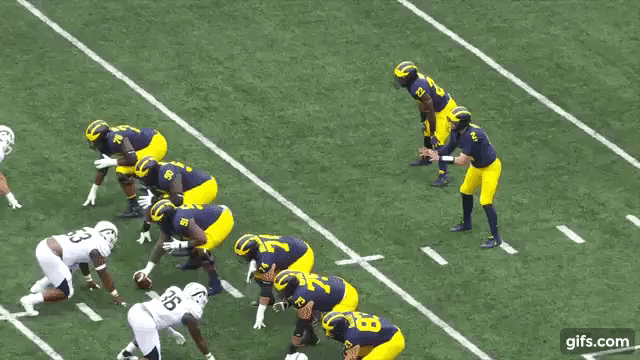
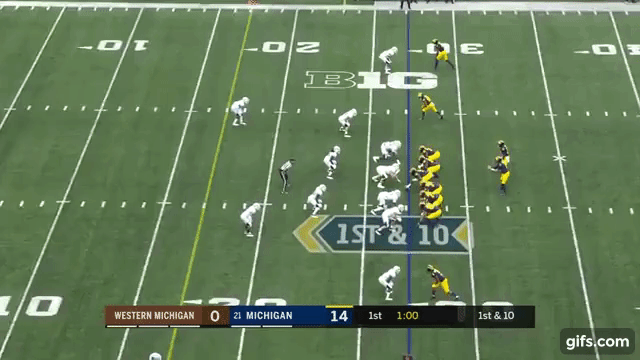
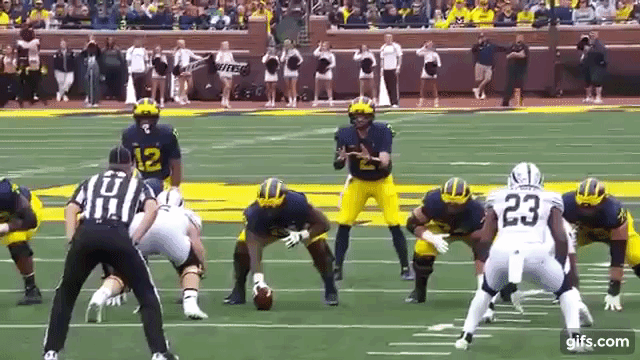

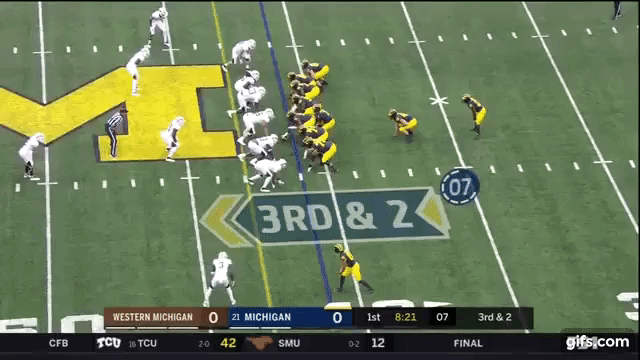
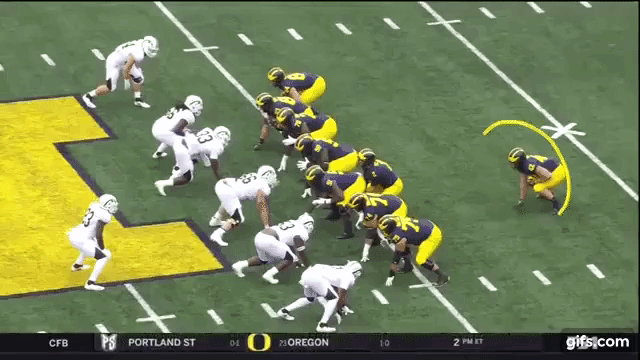
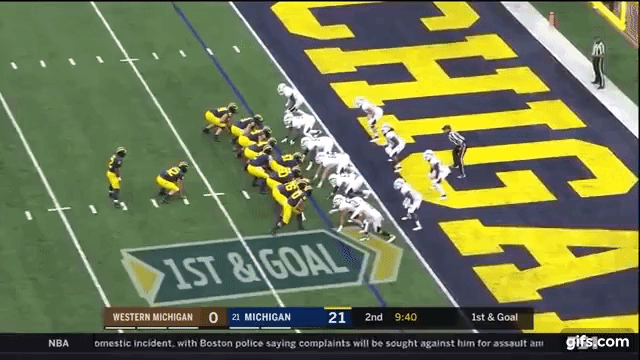
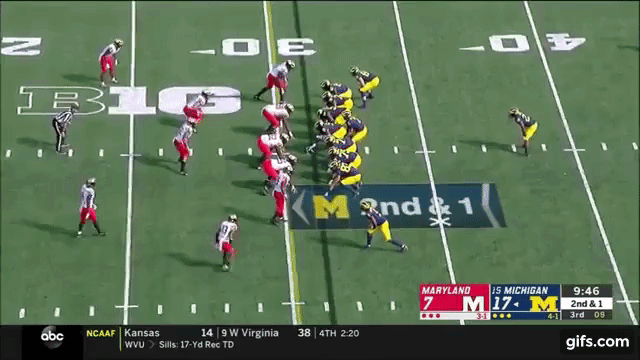



Comments
Post a Comment